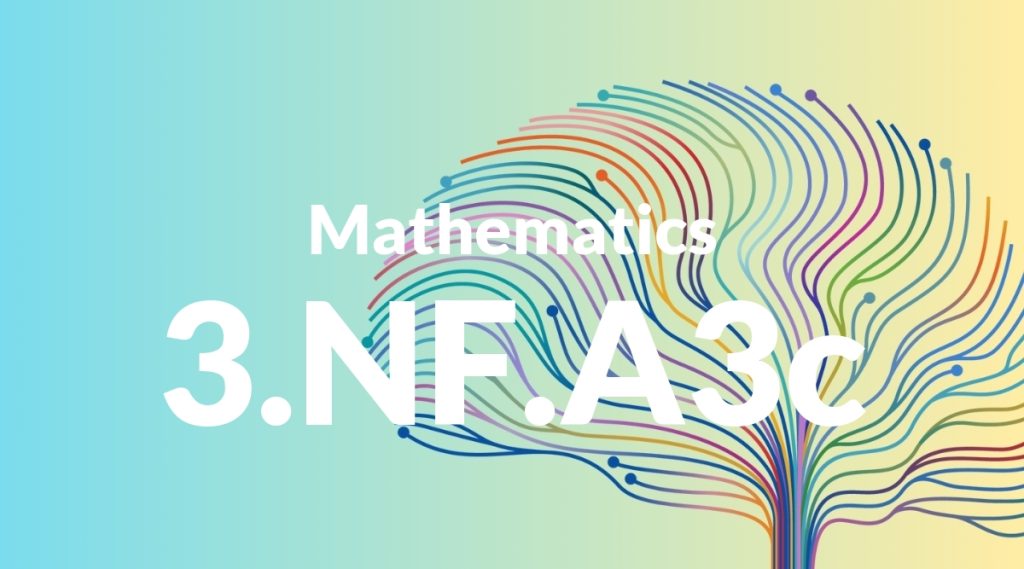Standard: 3.NF.A3c – Express whole numbers as fractions, and recognize fractions that are equivalent to whole numbers. Examples: Express 3 in the form 3 = 3/1; recognize that 6/1 = 6; locate 4/4 and 1 at the same point of a number line diagram.
Grade level: Grade 3
Subject: Mathematics
Domain: Numbers & Operations – Fractions
Teacher Overview
This standard focuses on helping students understand that whole numbers can be expressed as fractions and that some fractions are equivalent to whole numbers. This is important as it lays the groundwork for more complex fraction operations and concepts in later grades. Students should already know basic whole numbers and simple fractions, and be able to locate them on a number line. They should understand the concept of equivalency in simple terms.
After mastering this standard, students will be able to compare and order fractions, understand the concept of mixed numbers, and perform basic operations with fractions.
Common Misconception 1
A common misconception is that fractions cannot represent whole numbers. This is incorrect because fractions like 3/1 or 6/1 are actually equal to whole numbers 3 and 6 respectively.
Intervention 1
Use visual aids such as pie charts or number lines to demonstrate how fractions can represent whole numbers.
Common Misconception 2
Another misconception is that only fractions with 1 as the numerator can represent whole numbers. This is incorrect because fractions like 4/4 or 6/6 also represent whole numbers.
Intervention 2
Provide examples and exercises where different numerators and denominators represent whole numbers, such as 4/4, 6/6, etc.
Prerequisite Knowledge
Students should understand basic whole numbers, simple fractions (like 1/2, 1/3, 1/4), and how to locate these on a number line. They should also be familiar with the concept of equivalency in simple terms.
Subsequent Knowledge
After mastering this standard, students will be able to compare and order fractions, understand the concept of mixed numbers, and perform basic operations with fractions.
Instructional Activities
- Use pie charts to show how fractions can equal whole numbers.
- Create number lines to locate fractions and whole numbers.
- Group objects and divide them into fractions that represent whole numbers.
- Practice converting whole numbers to fractions and vice versa.
- Interactive games that focus on identifying equivalent fractions and whole numbers.




